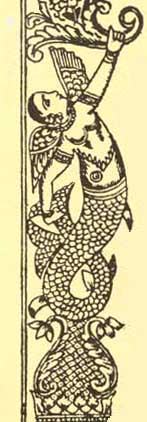*INTRODUCTION*
*TRANSLITERATION* -- Note: SCRIPT BARS
at the bottom of each page will give you viewing
choices: you can choose Urdu, Devanagari, or Roman
with diacritics.
A WORD OF CAUTION FOR
DEVANAGARI READERS-- Many
features of the system explained in this book depend
on careful use of the letters of the Urdu script.
You may find it much harder to use in Devanagari.
(I'm not sure, actually; maybe you'll find it only a
bit harder.) In any case, if you're serious about
the ghazal, time spent in learning the Urdu script
will prove to be your best investment.
*ONE ==
GENERAL RULES*
*1.0 == Why should
you learn meter?*
*1.1 ==
Words, syllables, and letters*
*1.2 ==
Syllables: two letters or one*
*1.3 ==
Syllables: start with consonants if possible*
*1.4 ==
Syllables: follow pronunciation*
*1.5 ==
Long and short syllables*
*TWO
== FLEXIBILITY*
*2.1
== Flexible words: the common monosyllables*
*2.2
== Flexible syllables: word-final vowels*
*2.3
== Flexible syllable divisions within words*
*2.4
== Flexible spellings to indicate scansion*
*THREE
== SPECIAL CONSTRUCTIONS*
*3.1 ==
Word-grafting*
*3.2 == iẓāfat constructions*
*3.3 == o constructions*
*3.4 == al constructions*
*FOUR
== IRREGULAR WORDS*
*4.1 ==
Orthography and pronunciation*
*4.2 ==
Irregular Persian words*
*4.3 ==
Irregular Indic words*
*4.4 ==
Irregular Arabic words*
*FIVE ==
METRICAL FEET*
*SIX ==
METERS*
*6.1 ==
Meter list*
*6.2 ==
Mir's "Hindi" meter*
*6.3 == The
rubāʿī meters*
*SEVEN == SCANNING AS
CODE-BREAKING*
*EIGHT
== FROM EYE TO EAR*
*NINE ==
BIBLIOGRAPHY*
*9.1 == Works
in English*
*9.2 == Works
in Urdu*
*TEN ==
EXERCISES*
*Exercises
1-6*
*Exercises
7-12*
*Exercises
13-18*
*Exercises
19-24*
(*Some
extra practice
with modern meters*-- Qayyum Nazar's Urdu translation
of Whitman's
"Leaves of Grass"
provides metrical information at the end)
*ELEVEN
== NOTES TO EXERCISES*
*TWELVE ==
GLOSSARY*

